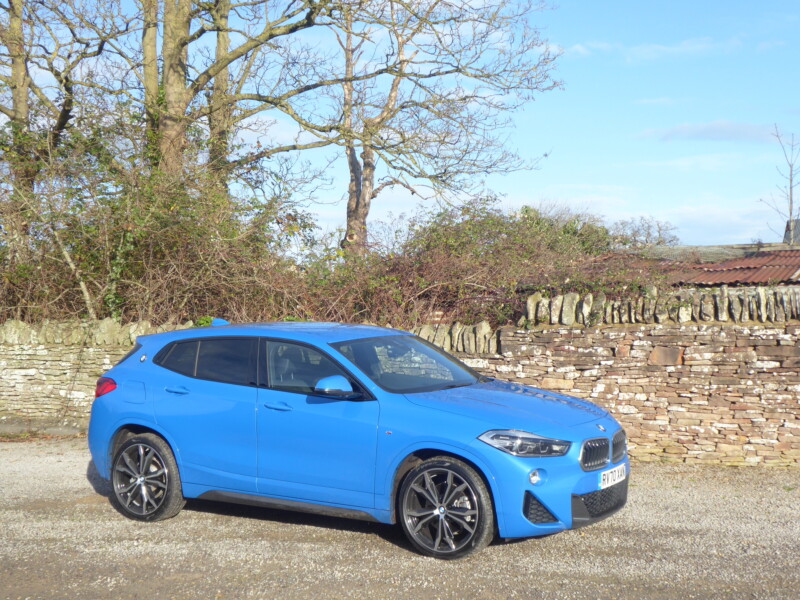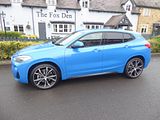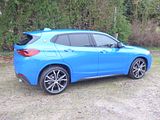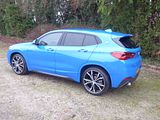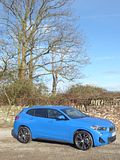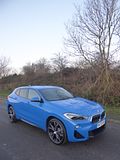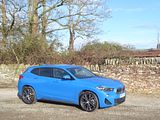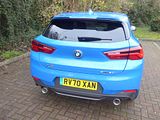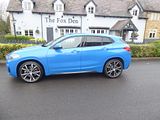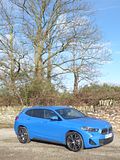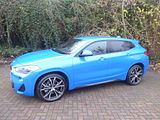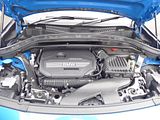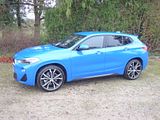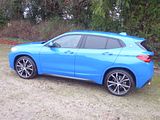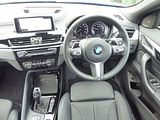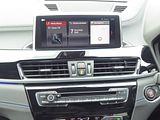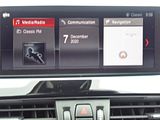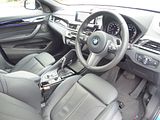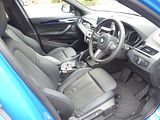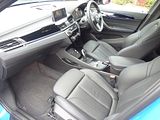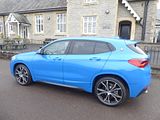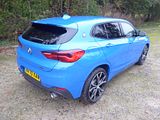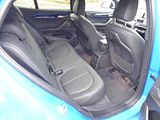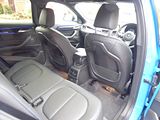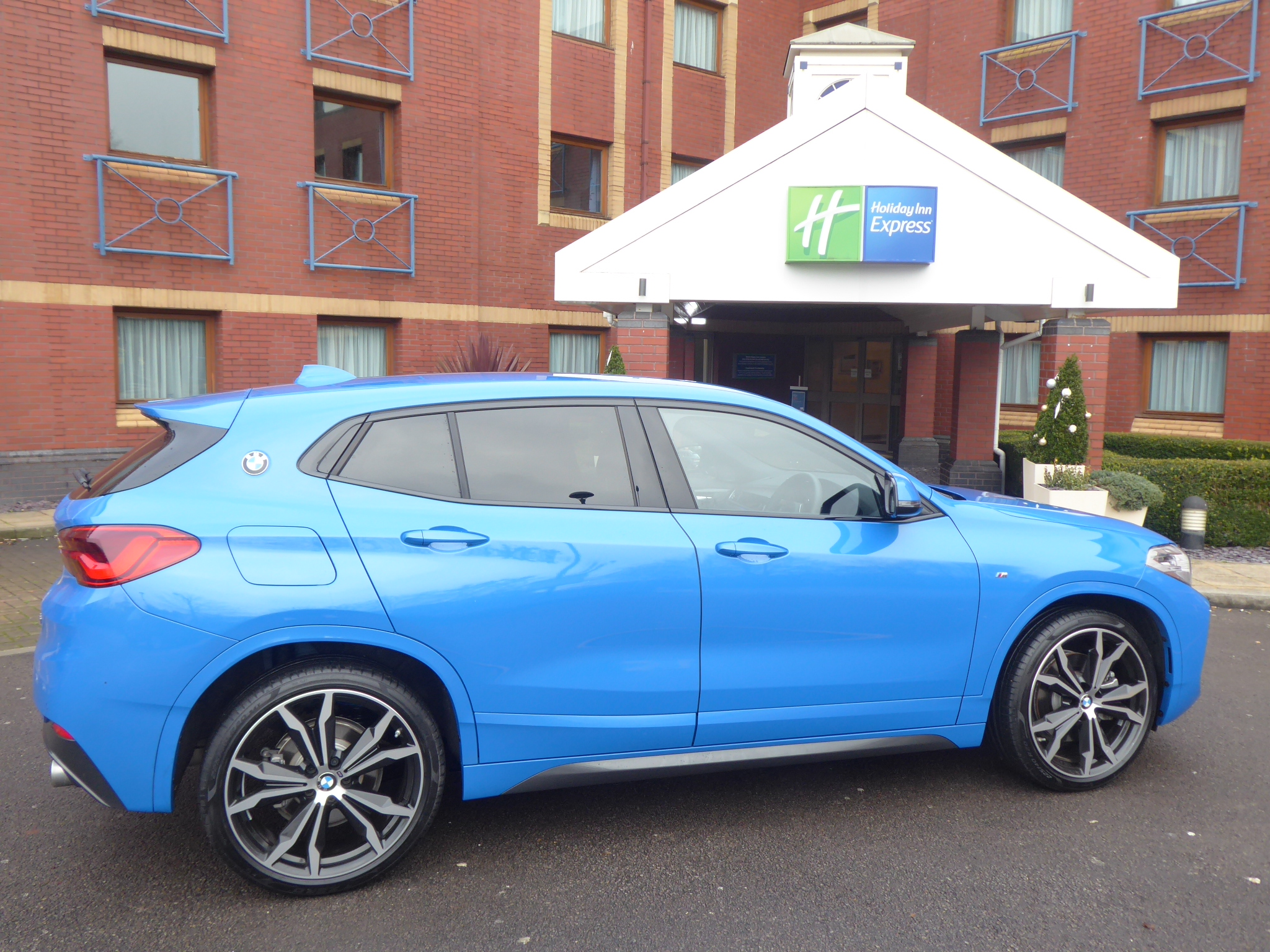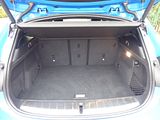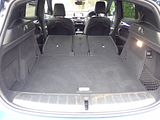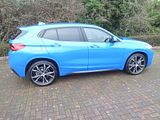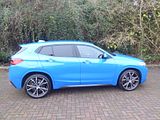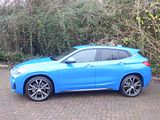Whilst the debate as to who really invented and popularised the SUV and Crossover genre continues unresolved, there is less doubt as to it was with the first Coupe-fied version of this style of car. It was BMW, with their X6, which launched in production form at the North American Auto Show in early 2008 after the earlier presentation at the 2007 Frankfurt Show of the X6 Sports Activity Concept. Retaining the attributes of an SUV (high ground clearance, all-wheel drive and all-weather ability, large wheels and tyres) it featured the stance of a coupé (styling featuring a sloping roof) and of course it came at a significantly higher price than the X5 with which it shared much underneath. The press and pundits were far from convinced that reducing the amount of space in a car type that was created precisely because people thought they wanted more space was the way to go, and the rather odd looks did not help matters, but the public clearly thought otherwise and in its first generation the X6 would go on to notch up over a quarter million sales, and it was not long before other manufacturers started to produce coupe versions of their SUVs as well. So it was no surprise that not only did BMW produce a second generation car in 2014 but they followed it up by doing the same to the smaller X3 as they had done to the X5, to create their second Coupe SUV, with the X4 of 2014. It can hardly have surprised anyone when they made the next logical move down the range again, creating the X2, which was based on their smallest SUV, the X1. Once again, the production car, officially unveiled in October 2017 with sales starting in early 2018, was presaged by a concept vehicle, which was shown at the 2016 Paris Show. The X2 is built off the same platform as underpins the X1 and the MINI Countryman. Whilst the X1 faces a long list of direct rivals, the X2 did have fewer obvious competitors, so success was going to come if a combination of the coupe-like styling and the merit of the underlying car appealed to be buying public. The second generation X1 had been much more positively received than its predecessor, so the raw material was certainly there, but its merits were more around being a car that people needed rather than necessarily wanted, so the X2 was going to have to be good enough to persuade people to pay the hefty premium BMW were charging for a car with less space in it. A chance to see what they achieved came when I was given one for the day as a loaner whilst my own car was being serviced. The dealer staff were a bit apologetic about it and said that they would be interested to hear what I thought, with their words suggesting that they were not totally convinced and other customers had also been less than impressed.
Unlike many cars, the X2 has badging on it which at least tells you which version you’ve got, so I knew right away that this was an sDrive 20i in M Sport spec. What does that mean? The sDrive bit is easy as that means that it does not have all-wheel drive so in the case of the X2, the front wheels are the driven ones. The 20i in this case does actually mean a 2.0 litre engine, a four cylinder turbo that puts out 189 bhp, and of course the I means it is a petrol unit. It is an utterly unremarkable unit. You start the car with a button to the left of the wheel, and the engine bursts into life, sounding that bit better than any diesel, but with no sense of impending fun, and indeed you don’t really get any. For sure, this version of the X2 goes well enough, with more than adequate acceleration to keep up well with traffic and to give burst of extra oomph for passing slower vehicle, and the unit is generally smooth and refined, but it just does not have any sparkle, any of that “ultimate driving machine” sort of DNA that rubbed off onto it. Whilst the engine is quiet at speed, the X2 is not, as there was a lot of road noise, thanks, I suspect largely due to those cursed run flat tyres. There is a 7 speed twin clutch automatic transmission, and there are wheel mounted paddles if you want to override the auto bit. It was well matched to the engine and very smooth in the gearchanges it made. The X2 has Sport, Comfort and Eco Pro driving modes, which manage the calibration of the engine, gearbox, stability control, power steering and, if fitted, adaptive dampers (not to my test car, for sure). There’s no Custom or Individual mode, without the likes of which many modern cars often frustrate by never quite being set up just-so. Thankfully, BMW does allow you to adopt the Sport mode’s more aggressive settings for the engine and drivetrain without having those of the suspension and steering I did not cover enough miles to be able to pronounce on fuel economy, sadly. Despite what some reviewers have written, I found that the Servotronic speed-sensitive steering is not what you would expect from a BMW, though it is what you often get these days. It is very light and quite vague feeling near the straight ahead but does gain some feel as you turn the wheel. You really aren’t likely to be seeking out the twisty and fun driving roads in this car. It handles tidily enough, and there is plenty of grip, but it will understeer quite readily and there is no feeling of fun or playfulness which characterises some of the rear wheel drive BMW models. The ride is not brilliant, either. The car came on what for a family car are relatively large and low profile wheels, at 225/40 R20 and run flat tyres which are standard on M Sport cars but an option on lesser trims. The result is a car that did not cope that well with some of the road surfaces on the motorway or off it, with plenty of evident firmness and an inability to cushion the occupants from any poor surfaces at best and plain discomfort at worst. The brake pedal was rather mushy, though the brakes themselves seemed to be effective enough. As with most cars these days there is an electronic handbrake, set by a small button in the centre console. Visibility is not the best. Particular challenges come from the rather small rear window and thick C pillars so the car is harder to park up and care is needed at oblique junctions, but that is the almost inevitable trade-off for the coupe-esque styling. Standard front and rear parking sensors help a little but a rear-view camera is a cost option.
The interior of the X2 very much follows the current BMW house style and indeed it is pretty much identical to that of the X1. Overall, the quality of the materials is pretty decent though it still fails to reach the high standards set by Audi or Volvo. To relieve the large areas of black, there is some blue stitching, and there are metallised inlays on the door casings and the dash. There is a leather wrapped wheel, which, in a break with BMW tradition, is actually not unduly thick and chunky. There is a simple instrument cluster containing two large electronic dials for speedo and rev counter with smaller water temperature and fuel level gauges inset in them. There is a central display area for trip computer functions. As with all recent BMWs I have driven, the odometer reading is at the very bottom of this area and is too low so I cannot actually see it from my normal driving position. BMW have persisted with the one touch indicators in this car, and whilst there were no particular issues in operating them, I can’t help but feel that these are a solution to a problem that no-one really had. There are auto wipers that operate from the other column stalk. Lights are selected from a rotary dial on the dash to the right of the wheel and these also include an auto function. There are cruise control and audio repeater buttons on the spokes of the steering wheel. The centre of the dash is dominated by the 8.8” colour touch screen which incorporates BMW’s iDrive system. This is among the best out there at present, proving easy to use with the iDrive control wheel and menu buttons in the centre console, as well as retaining some knobs and buttons for the audio unit. That is a Harmon Kardon system and there was good sound quality. The graphics on the screen are clear and crisp and the response time from the unit was good. Beneath this are the buttons for the dual zone climate control. With memories of the latest 3 Series still clear in my mind, I could not help feel that whilst some will decry the overall set up here as feeling a little “previous generation”, that might actually be no bad thing, as it was all easy to use and unfussy whereas the later car seems to be moving away from that paradigm.
The seats were trimmed in the sort of artificial leather that really does not feel to be of particularly high quality, typical of the sort that you find in all low end BMW models. Needless to say, an upgraded quality, with real leather, is available as a cost option. Although this is an SUV, or SAC, as BMW marketers want us to think of it, you don’t sit that high, with the seating position being 20mm lower than it is in the X1, thus negating some of the reasons why people buy crossover-style cars in the first place. The seats themselves are manually adjusted and will move quite a long way in each direction so most people should be able to get comfortable. It did prove quite hard to get at the backrest angle knob as there is not much clearance between the seat and door pillar. There is an extensible seat bolster which will benefit those who are long in the thigh (which is not me). The seats in this car had heating elements, but even though it was a winter’s day when I tested the X2, I did not try these out. The steering column also has a wide range of manual adjustment in and out and up and down.
The X2 is likely to appeal to families, so rear seat space matters. And actually, the X2 does OK here, with reasonable amounts of legroom even when the front seats are set well back, and the coupe-like styling does not take much off the headroom though the very tall may find that there is not enough clearance for them. It would be a struggle to get three adults in here comfortably from a width pint of view, but that is true with a lot of cars of this size. Complaints are much more likely to come from the fact that a combination of small rear windows, and a high belt line plus the inclusion of rear privacy glass makes it all feel a bit claustrophobic in here. There is a drop-down armrest with a cubby in the upper surface and there are pockets on the doors and nets on the back of the front seats for those odds and ends.
The tailgate has an electric operation to close it, which is always handy. The figures will tell you that you only lose 30 litres of capacity compared to an X1, but the boot itself is quite shallow, so may not cope with lots of luggage in a fully populated car. and there is a noticeable sill over which you will have to lift luggage. More space can be created by dropping down the rear seat backrests, which are split 3 ways, 40/20/40. The resulting load area is flat. Inside the cabin there is a good-sized glovebox, pockets on the doors and there is a central armrest cubby, as well as lidded cupholders with space on top of them that can also be used.
At launch, BMW only offered the X2 with a couple of engine choices, with the 2 litre petrol as featured here or a 2 litre diesel in the sDrive20d, but the range was soon expanded to include cars with both less and more power. Three cylinder 18 petrol and diesel models provided a cheaper entry point into the range whilst those who wanted more performance could get the 306 bhp X2 M35i and those who wanted frugality and a lower benefit in kind rating could select the plug-in hybrid xDrive25e. The sDrive 18i and 18d cars come with a standard manual transmission, all the others have an automatic as standard. xDrive all-wheel drive is an option on the petrol 20i and standard on the diesel 20d and models above this. Trim options for the UK market came as the SE, Sport, and M Sport. The range starts with the BMW X2 SE which comes with 17-inch alloy wheels, air conditioning, an 8.8-inch infotainment system (with navigation, Apple CarPlay, Bluetooth and DAB radio), cruise control LED headlights, rear parking sensors and a three-spoke leather-covered steering wheel. The BMW X2 Sport adds 18-inch alloy wheels, ambient interior LED lighting, contrast stitching on the dashboard, front sports seats and race cloth upholstery (which, apparently, makes the X2 accelerate faster). M Sport models have a bodykit of deeper bumpers and side skirts, a rear spoiler, bigger wheels and two exhaust tailpipes. The M Sport comes equipped with adaptive LED headlights, an M Sport bodykit, M Sport rear spoiler, 19-inch alloy wheels and automatically dimming side mirrors. BMW also adds front and rear parking sensors as standard. On the inside, the car has sports seats finished in a combination of black Micro Hexagon cloth upholstery and Sensatec artificial leather trim. Aluminium Hexagon interior trim, with blue detailing, is set off by velour floor mats. Other standard equipment includes heated front seats, climate control air-con, an extended storage package and an automatically dimming rear view mirror. Cruise control is fitted as well, along with an electrically opening tailgate. Standard infotainment on the BMW X2 includes an 8.8-inch multimedia touchscreen, operated with iDrive 6 software. This can be accessed through the touchscreen, or by using the iDrive rotary controller. DAB radio, satellite navigation, real-time traffic information and Apple CarPlay integration are all included. However, it is worth noting that there is no option to use Android Auto phone connectivity. Moving up to the rapid BMW X2 M35i delivers an extra batch of standard equipment. Bespoke M Sport styling upgrades are the most obvious additions, along with larger 20-inch alloy wheels. High-gloss black Shadowline exterior trim is fitted, too. The car also gets standard M Sport suspension, M Sport brakes with blue-painted callipers and M Sport steering. A larger fuel tank is fitted – and you may need it. Inside, the BMW X2 M35i comes with high-backed M Sport heated sports seats finished in a combination of black Trigon cloth and Alcantara. There is also an M Sport steering wheel, M Sport seatbelts and a black headlining. Needless to say, BMW offer a whole series of option packs.
When I returned the X2, I was indeed asked for my opinion. And it is this: if there were no BMW badges on it, you would be hard pressed to guess that the renowned Bavarian firm was its maker. It could, quite frankly, be just about anything. Whilst there are no serious weaknesses to the car, apart from the punishing ride and the road noise, there is no real sparkle to it, and none of the traits that have propelled BMW to the market position and perception they enjoy today. If you like the style and design of the car – and that is a purely personal thing – then there’s no particular reason not to want an X2, but equally there was nothing that stood out to make me say “this is why people choose it” apart, perhaps from people wanting the badge. Looking at the sales figures, it would seem that quite a few people do indeed want just that. But it’s not a car I would choose, or even recommend.

